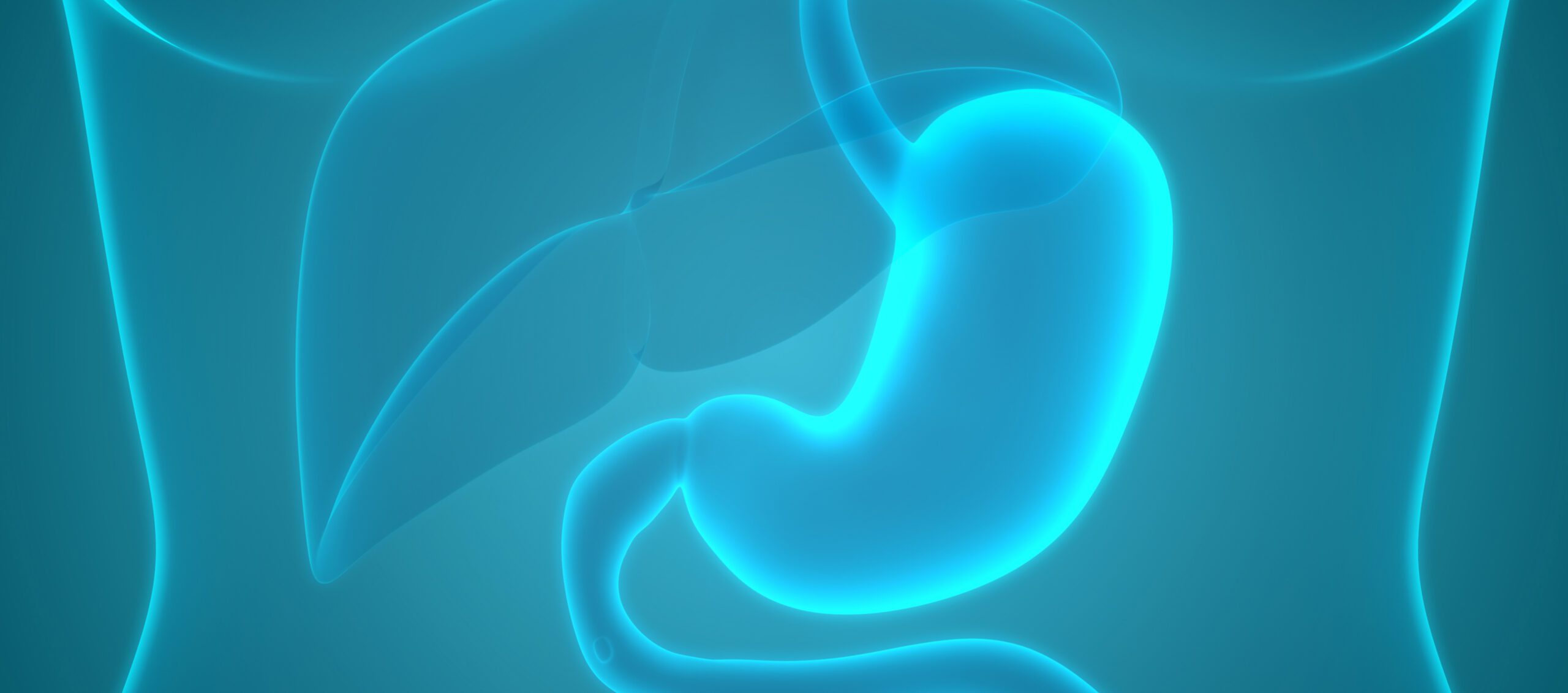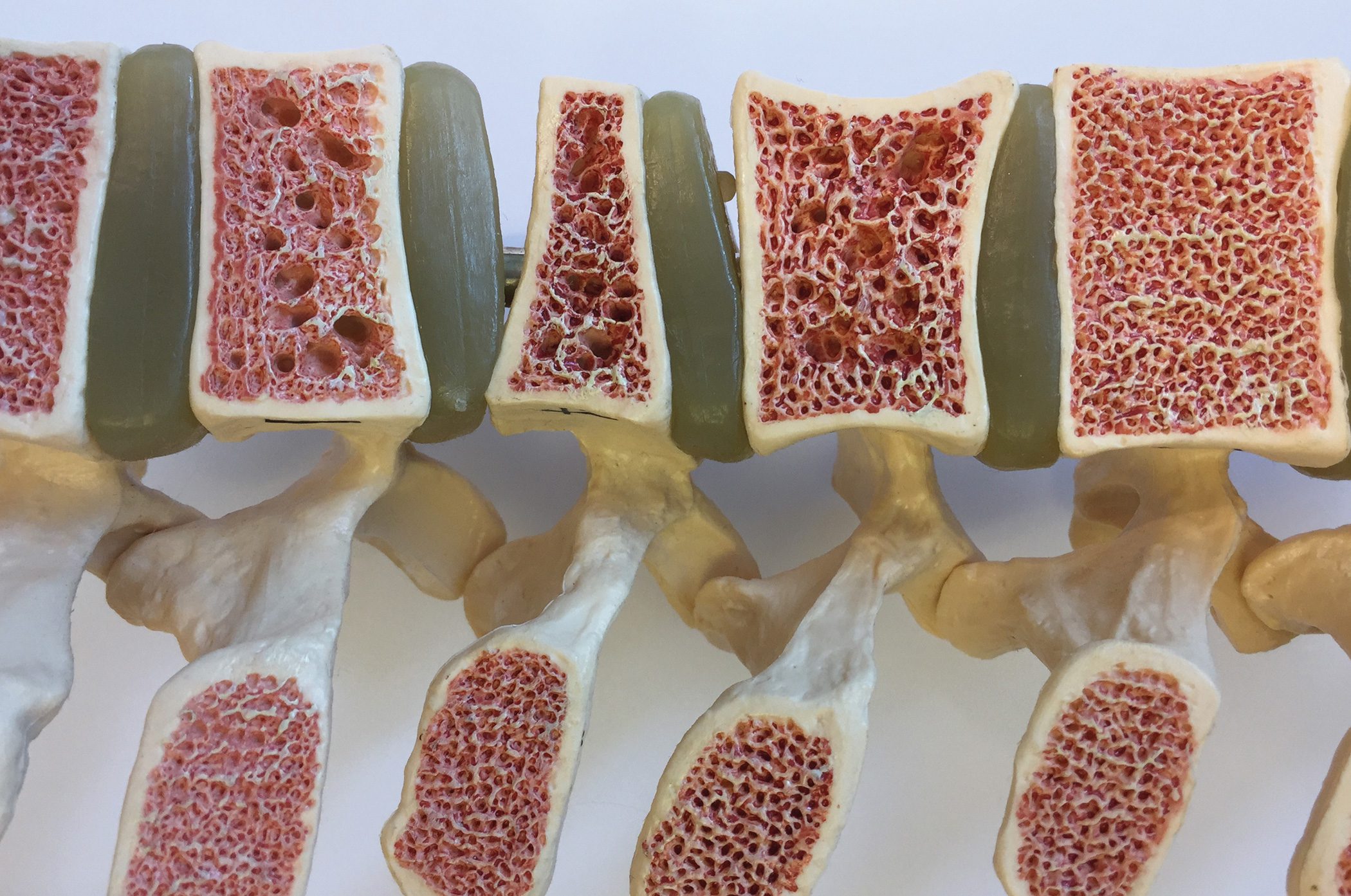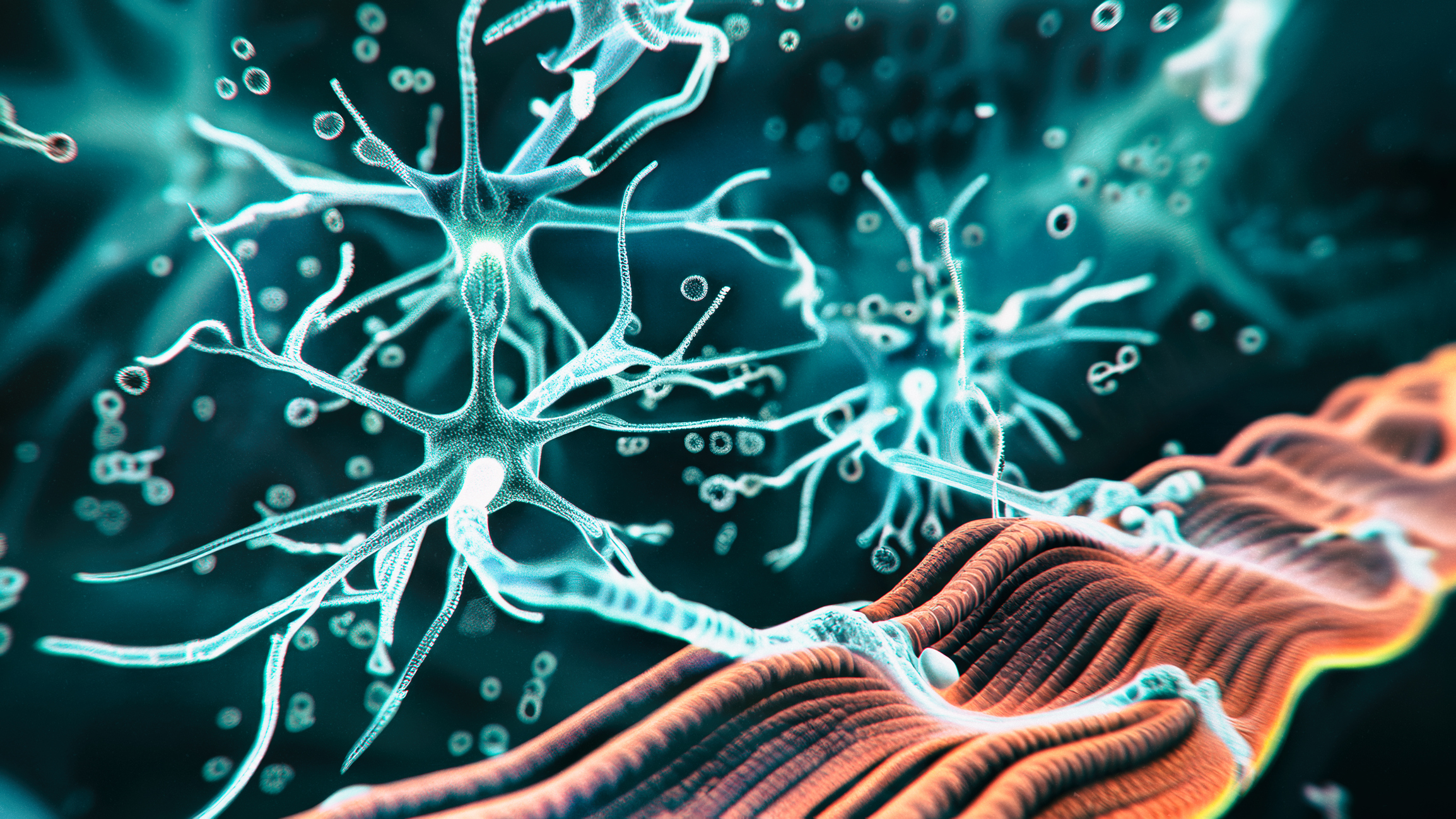Despite the frequency and significance of Alzheimer’s disease, in many cases it is not diagnosed or only diagnosed at an advanced stage of the disease, which considerably limits the treatment options. Molecular CSF markers such as amyloid beta 1-42 (Aβ1-42), total tau (tau) and phosphorylated tau (pTau181) or imaging techniques such as amyloid PET are considered reliable diagnostic methods that enable early detection of Alzheimer’s core pathology. In the near future, blood-based biomarkers could become increasingly important and make diagnosis much easier, as they represent an easily accessible and more cost-effective alternative.
You can take the CME test in our learning platform after recommended review of the materials. Please click on the following button:
Alzheimer’s disease is the most common cause of dementia and is considered one of the most significant individual, social and health policy challenges of our time. Despite the frequency and significance of the disease, in many cases it is not diagnosed or only diagnosed at an advanced stage of the disease, which considerably limits the treatment options.
Molecular CSF markers such as amyloid beta 1-42 (Aβ1-42), total tau (tau) and phosphorylated tau (pTau181) or imaging techniques such as amyloid PET are considered reliable diagnostic methods that enable early detection of Alzheimer’s core pathology. They are being used more and more frequently and allow more precise diagnostic and prognostic statements as well as adapted treatment recommendations. However, the results of these examinations must be interpreted carefully, individually and in the overall context of all other findings.
In the near future, blood-based biomarkers could become increasingly important and make diagnosis much easier, as they represent an easily accessible and more cost-effective alternative. This development could lead to a much broader use of biomarkers and accelerate the development of effective and personalized prevention and treatment approaches.
This article provides a comprehensive overview of the current state of diagnostics in Alzheimer’s disease with a focus on cerebrospinal fluid and blood-based biomarkers [38]. In addition, the significance of biomarker-based early diagnosis is explained and the prospect of possible developments in diagnostics, particularly with regard to blood markers, is discussed.
Introduction
With over 156,900 people directly affected in Switzerland today, a number that is expected to double by 2050, dementia represents one of the greatest social, economic and health policy challenges. Every year, around 33,000 people in Switzerland are newly diagnosed with dementia, but only around half of these cases are formally diagnosed, usually only at an advanced stage [20]. National and international guidelines recommend a diagnosis early in the course of dementia [38,9,20]. This allows reversible causes and accompanying mental illnesses to be recognized and treated. In addition, drug treatments, particularly for Alzheimer’s disease, are more effective in the early stages of dementia. If the diagnosis is made as early as possible, those affected can also be better involved in decision-making processes, as their capacity for judgment is usually still intact at the beginning of dementia. Patients and their relatives can thus be given more targeted advice and supported in their planning with regard to future living arrangements, care, financial and legal aspects.
Diagnostic clarification
Cognitive disorders in old age are usually investigated following an initial examination in a GP’s practice if cognitive impairment is suspected. After a clinical and cognitive screening examination, the patient may be referred to a memory clinic for a specialized assessment. In further steps, the severity of the cognitive impairment and any associated non-cognitive neuropsychiatric symptoms and disturbances in activities of daily living are assessed. Furthermore, the etiology of the symptoms present should be sufficiently clarified in order to be able to offer the most efficient treatment and personalized advice possible. The standard examinations at the Memory Clinic include a detailed medical history of the patient and others, a clinical examination and detailed neuropsychological testing. Structural imaging of the brain and blood analyses to search for systemic diseases or disorders as primary causes or exacerbating factors of cognitive impairment are also part of the standard diagnostics. If there are grounds for suspicion, additional examinations are available for a more precise diagnosis, including extended and special blood analyses, EEG, sleep diagnostics, nuclear medicine procedures, cerebrospinal fluid analyses and other examinations.
Alzheimer’s disease
In cognitive disorders in old age, Alzheimer ‘s disease ( AD) is the most common underlying cerebral pathology in around 60-70% of cases and thus the most common cause of dementia [43]. The characteristic brain changes develop up to two decades before the first symptoms appear, with more and more brain regions being affected by neurodegeneration and loss of function over time [43]. Particularly in the early stages, the clinical picture is varied and non-specific; in many cases, mental and behavioral disorders precede the cognitive symptoms or occur simultaneously with them [22,44].
For many years, criteria based primarily on clinical and neuropsychological assessment and the exclusion of other causes were used to diagnose Alzheimer’s disease [31,47]. These criteria, even when applied by experts, have a relatively low diagnostic accuracy, leading to incorrect diagnoses in 20-30% of cases [34,38]. The differential diagnosis can be particularly challenging in the early stages of the disorder due to the diverse and non-specific clinical pictures [43]. A variety of other psychiatric, systemic and neurological disorders can also lead to symptoms similar to those of AD.
Mild cognitive impairment (MCI, also known as mild neurocognitive disorder [3]), defined as objectifiable cognitive impairment without impairment of everyday activities, corresponds to the “prodromal stage” of dementia in AD and usually lasts several years. In many cases, those affected themselves or their relatives notice the first symptoms and contact their family doctor or a memory clinic directly for clarification. However, the diagnosis and prognosis at this stage are imprecise without the inclusion of additional biomarkers and have an even lower sensitivity and specificity than in the dementia stages at [43], which is why additional tests such as cerebrospinal fluid markers often play a particularly important role at this stage.
If, in addition to cognitive deficits in several areas of cognition, everyday activities such as shopping, cooking or independent mobility on public transport are restricted for longer than six months due to cognitive impairment, a clinical diagnosis of dementia can be formally made [47].
The long time lag between the onset of the first symptoms and the diagnosis of probable or possible Alzheimer’s disease and the low specificity of the clinical criteria for AD are major limitations for an accurate early and differential diagnosis as well as for the prognosis of cognitive disorders and thus for individually tailored recommendations and treatment options.
The characteristic cerebral changes of AD are the intraneuronal accumulation of hyperphosphorylated tau protein (neurofibrillary tangles) and extracellular deposits of amyloid peptides in the form of plaques, associated with synapse loss and neuronal death. Direct evidence of the specific pathologies can currently only be provided histopathologically post mortem. However, various methods that indirectly detect these pathological changes are also available during the patient’s lifetime and thus for clinical practice. They can help to improve the accuracy of the aetiological diagnosis of cognitive disorders in old age [9,38]. Currently, both CSF biomarkers and amyloid PET are approved in Switzerland for the detection of Alzheimer’s pathology. Fluorodeoxyglucose positron emission tomography (FDG-PET) can detect hypometabolism of the brain regions affected by loss of function and show typical patterns for AD as well as for other neurodegenerative diseases, thus improving the differential diagnosis in early clinical stages in particular. Amyloid PET can be used to directly visualize amyloid deposits in the brain [25]. Tau PET for the in vivo detection of tau pathology has so far mainly been available for research purposes. These examinations are limited in their availability by the relatively high costs, the associated radioactivity and the need to be carried out in nuclear medicine centers.
The CSF biomarkers are discussed in more detail below.
The established CSF markers of neurodegenerative diseases
CSF markers have been used to assess cognitive disorders for more than 20 years. They are part of Swiss and international consensus recommendations [9,38]. The reasons for this are the need for improved precision in diagnosis and the desire to confirm the diagnosis even in mild disorders (MCI) and in the presence of symptoms atypical of AD and thus to offer specific recommendations for treatment, life planning and secondary prevention at an early stage [39,43].
The molecular CSF biomarkers amyloid-beta 1-42 (Aβ1-42), total tau (tau) and hyperphosphorylated tau on threonine 181 (pTau181) reflect cerebral amyloid deposition, neuronal cell death and neurofibrillary pathology, respectively. As these proteins clump and accumulate in the brain, the CSF concentration of Aβ 1-42 decreases by approximately 50%. At the same time, the concentrations of tau and pTau181 in the CSF increase by up to 200-300% of normal values [17].
In certified laboratories, Aβ1-42, Tau and pTau181 are determined simultaneously as standard. The additional determination of Aβ1-40 makes it possible to use the Aβ1-42/Aβ1-40 ratio to compensate for inter-individual fluctuations in amyloid production and to reduce susceptibility to pre-analytical deviations [26].
These CSF markers are currently considered to be the best validated biomarkers of AD. They achieve a high diagnostic accuracy, improve the differential diagnosis and can provide information on both the severity of neurodegeneration and the clinical prognosis [17,43]. They therefore contribute significantly to diagnostic certainty, to the avoidance of further unnecessary diagnostic steps and to decision-making regarding treatment and care [12,35].
CSF marker analysis is currently the only approach available in practice that can simultaneously provide evidence of cerebral amyloid pathology as well as evidence of neuronal cell death and tau hyperphosphorylation. However, borderline, contradictory or false positive and false negative results are also possible [17,28,38]. In addition, this approach does not allow any statement to be made about brain functional limitations and the extent of pathology in the individual brain regions. Accordingly, in clinically atypical or unclear cases, an examination such as FDG-PET can be used for differential diagnosis primarily or in addition to CSF diagnostics [25,29].
Other causes can also be excluded or detected in the CSF at the same time as Alzheimer’s pathology is detected, such as encephalitis. A significantly increased tau concentration with normal Aβ1-42 and no or relatively slightly increased pTau is a typical constellation for Creutzfeldt-Jakob disease (CJD). Other markers can also be determined if this is suspected. For example, the detection of the protein 14-3-3 in the cerebrospinal fluid can indicate rapid neuronal cell death and is a highly sensitive, albeit non-specific marker for CJD. The newer RT-QuIC method can detect the pathological prion protein and has a significantly higher specificity with comparable sensitivity [21].
Indications for diagnostic lumbar puncture
The main indications for a cerebrospinal fluid examination as part of additional diagnostics are
- First symptoms before reaching the age of 65
- Rapidly progressive cognitive deterioration (e.g. suspected Creutzfeld-Jakob disease)
- Atypical clinical presentation
- Exclusion of inflammatory CNS diseases
- Suspected early stage of AD (including MCI) according to individual indication
- Diagnostic decompression puncture for suspected normal pressure hydrocephalus.
The indication for lumbar puncture (LP) must always be carefully weighed up against the risks and benefits. Possible contraindications, medical-biological, biographical, psychological and practical aspects as well as the patient’s preferences must be taken into account. Adequate information about the procedure and the risks as well as the expected benefits of the examination and possible alternatives is mandatory [38].
In Switzerland, compulsory health insurance (OKP) has been covering the costs of CSF marker analyses since July 1, 2019, subject to certain limitations, including for patients with MCI.
Implementation
Diagnostic LP can be performed routinely in an outpatient setting, is low-risk if contraindications are observed and is usually well tolerated [16,39,49]. In addition to written information about the procedure and risks of LP, an informative discussion about the possible biomarker results and any associated prospects and treatment options should be held in advance [19,38].
The exact pre-analytical handling of CSF samples for the routine determination of CSF markers is described in international guidelines [27]. The CSF sample is collected by dripping, with the first 1-2 ml being discarded. The sample must be taken directly into a tube with low protein-binding properties, e.g. made of polypropylene [13], in order to prevent the amyloid protein in particular from settling on the wall of the tube and thus leading to falsified results. Ideally, samples should be transported to the laboratory refrigerated or frozen, but can also be transported at room temperature if the journey time is short. In general, the instructions and specifications of the determining laboratory should be followed.
The interpretation of the results is based on laboratory-specific reference ranges, whereby it is initially limited to the presence or absence of the corresponding cerebral pathologies. Even in the case of laboratory-chemically clear CSF marker findings, these are not automatically to be equated with the diagnosis and require additional assessment in relation to the overall clinical context [5].
Notification of findings
CSF biomarkers are now part of international diagnostic criteria and have recently become increasingly important in the diagnosis of dementia in this country [14]. Nevertheless, they are only ever part of the diagnostic process [9,38]. Biomarkers must always be evaluated in the context of the results of the medical history, clinical and neuropsychological examination and other additional examinations. The interpretation and communication of borderline or contradictory findings can pose a particular challenge. The assessment and classification should take place within the framework of multidisciplinary boards or diagnostic conferences, as generally recommended by the Swiss Memory Clinics [9,38].
In principle, those affected have a right to know the results of their medical investigations [45]. However, in the case of sensitive data or data that is difficult to understand, it is the responsibility of the person providing treatment to communicate the results in an understandable form and to place them in an overall diagnostic and therapeutic concept.
The careful and empathetic communication of a confirmed and serious diagnosis is a major challenge and requires a great deal of experience and professionalism [6]. Under certain circumstances, the explicit diagnosis can bring a certain amount of relief to those affected, as there is now an identifiable explanation for the problems they are experiencing. On the other hand, however, there is a risk that disclosure may trigger negative psychological reactions in those affected, such as fear, sadness, anger, concern about stigmatization or even suicidal thoughts [6]. However, with an appropriate approach, the risk of a persistent negative reaction is low overall and the positive aspects clearly outweigh the negative [10,48]. International guidelines and the Swiss quality standards in dementia diagnostics recommend communicating the results accordingly [9].
Paradigm shift in the diagnosis of Alzheimer’s disease: the importance of early diagnosis
The validation and increasing use of biomarkers of cerebral pathologies has enabled the development of new criteria for AD, which are increasingly being used in clinical practice [2,3,14]. In contrast to the previous exclusion diagnosis of AD, these new criteria give biomarkers an important supportive role in the diagnosis and, with appropriate biomarker findings, allow the symptoms of cerebral AD pathology to be confirmed. In addition, the new criteria take into account the fact that the development of the pathology precedes the dementia stages by many years and that the disease progresses clinically from asymptomatic stages through mild cognitive impairment to dementia stages [24]. Formal diagnosis or exclusion of the disease is therefore possible early in the clinical course of the disease, i.e. as early as the stage of mild cognitive impairment [3]. An early and precise diagnosis of Alzheimer’s disease not only enables early intervention, but also offers the opportunity to better predict the course of the disease and develop individualized treatment strategies. Diagnosis at an early stage can also help to delay cognitive decline, treat accompanying neuropsychiatric symptoms appropriately and improve the quality of life of patients and their relatives through early intervention. Early diagnosis is particularly important in the context of developing new therapies, such as anti-amyloid immunotherapies, in order to be able to intervene in the pathological processes as early as possible.
Prospects
Blood biomarkers: While the CSF markers Aβ1-42, tau and pTau181 as well as Aβ1-42/Aβ1-40 are considered to be largely established in terms of their diagnostic value, new biomarker candidates are currently being researched. In addition to the precise diagnosis of Alzheimer’s pathology, these markers should also map additional pathological processes as far as possible and thus allow a more precise diagnostic and prognostic statement.
Blood biomarkers have become increasingly important in recent years, even if they are not yet approved for clinical practice in Europe or Switzerland as of 2024. They will represent a non-invasive, cost-effective alternative to CSF analysis or PET imaging and could find wider application in routine diagnostics in the future [34]. The currently most promising blood biomarkers include
Neurofilament light chains (NfL ): NfL (neurofilament light chain, NfL) is one of the best-studied new biomarkers. NfL is released from neurons in axonal damage regardless of the cause and is associated with the severity of symptoms in various neurodegenerative diseases [1]. NfL can be measured in both CSF and blood and thus has the potential to map the development of cerebral processes with neuronal damage over time (Ashton et al., 2021; Mattsson et al., 2017). However, due to the lack of disease specificity, NfL is not very suitable for the differential diagnosis of Alzheimer’s disease [11].
Phosphorylated tau proteins (pTau): Plasma pTau181, pTau217 and pTau231 are among the most promising blood-based biomarkers for AD pathology. In various studies, they were closely associated with cerebral tau and amyloid pathologies and could well distinguish AD from other neurodegenerative diseases [11,32,46]. Their diagnostic specificity and sensitivity were also comparable to those of CSF markers [7]. In patients with mild cognitive impairment, pTau alone or together with available parameters such as age and the results from cognitive tests could help to identify cerebral AD pathology and predict future cognitive deterioration with high accuracy [11,33].
Amyloid 42/40: Plasma Aβ42/40 is reduced in the presence of cerebral amyloid pathology, albeit to a relatively low degree. This limits the diagnostic value of the currently available amyloid measurements in blood and makes them less suitable than pTau for reliably detecting amyloid pathology.
Glial fibrillary acid protein (GFAP): GFAP is the main component of intermediate filaments in astrocytes in the CNS and is therefore considered a marker for astrocytosis and activation of astroglia. It can be measured both in cerebrospinal fluid and in blood. Various studies have shown that GFAP measured in blood in particular has good diagnostic, differential diagnostic and predictive properties for Alzheimer’s disease [50].
The new biomarker candidates must be validated in further independent studies before they can be used in routine clinical practice. For broad implementation and availability, many of the new determination methods will also need to be simplified and the pre-analytical handling of the samples standardized [33]. The clinical use of the new blood biomarkers could, for example, improve the diagnostic pathway in terms of cost and speed by using a recently proposed two-step process [18]. If AD is clinically suspected, blood biomarkers such as pTau217 are measured first. If the result is clearly positive or clearly negative, further invasive (LP) or expensive (amyloid PET) additional tests can be dispensed with due to the very high specificity and sensitivity (>95 %). Further examinations would only be necessary in cases with unclear or borderline results. In a recently published study, it was shown that with this approach, the blood marker results remained unclear in only around 20% of cases and required further diagnostics [8]. Research is currently continuing on improved blood markers for clinical use, with various methods with very promising results already available for research [23]. It is expected that blood biomarkers will be available for clinical use in a few years.
The availability of non-invasive and inexpensive blood biomarkers will not only facilitate research into new preventive and therapeutic approaches in the very early stages of neurodegenerative diseases, but is also likely to bring about significant changes in the diagnosis and treatment of cognitive disorders in old age. Despite the easier availability and improved diagnostic and prognostic value of biomarkers, experienced experts, for example in specialized memory clinics, should continue to determine the indication, interpret the results and make recommendations based on them in the future.
Biomarkers for neuropsychiatric symptoms
Neuropsychiatric symptoms (NPS) such as depression, apathy, aggression or sleep disorders occur very frequently in the context of dementia (up to 98% of cases) and significantly impair the quality of life of patients and their relatives [15,36]. They often occur at the beginning or even before the onset of cognitive disorders, which is why they also play an important role in the early phase of AD [22,44]. In addition, the presence of these symptoms is associated with a poorer prognosis in terms of faster cognitive decline and earlier institutionalization [41]. For these reasons, it is important to validate biomarkers for these symptoms as well and to include them in the diagnosis, treatment and prognosis. Initial studies show that individual biomarkers such as GFAP and other blood plasma proteins could facilitate the prediction of persistent NPS over a longer period of time [40,42]. In the future, such markers could significantly facilitate personalized decision-making for the treatment of NPS and thus potentially also positively influence the course of the disease and quality of life.
Summary
The currently available and well-established CSF markers allow a more precise and earlier diagnosis of AD and provide valuable information on the presence of other causes of neurocognitive and neuropsychiatric disorders. They are now part of the extended diagnostic work-up in Switzerland, which is usually carried out in memory clinics or by specialist experts. CSF markers are particularly important in the early stages of developing cognitive disorders and in relatively young patients, when a sufficiently precise etiological diagnosis is essential for specific treatment and further life planning. However, biomarkers should also generally be considered as a diagnostic option and offered to patients as part of the assessment if the risk-benefit ratio is sufficiently favorable.
In the near future, it is expected that blood biomarkers will be available as a cost-effective and non-invasive alternative and thus lead to a much wider use of biomarkers. Nevertheless, biomarkers will also have to be assessed in the future in the overall context of anamnestic, clinical and other available additional examinations. The interpretation and communication of findings and the resulting treatment and advice should continue to be provided by experts and specialized centers (memory clinics) .
Take-Home-Messages
- Despite the frequency and significance of Alzheimer’s disease, in many cases it is not diagnosed or only diagnosed at an advanced stage of the disease, which considerably limits the treatment options.
- Molecular CSF markers such as amyloid beta 1-42 (Aβ1-42), total tau (tau) and phosphorylated tau (pTau181) or imaging techniques such as amyloid PET are considered reliable diagnostic methods that enable early detection of Alzheimer’s core pathology.
- In the near future, blood-based biomarkers could become increasingly important and make diagnosis much easier, as they represent an easily accessible and more cost-effective alternative.
Literature:
- Al Shweiki MR, Steinacker P, Oeckl P, et al: Neurofilament light chain as a blood biomarker to differentiate psychiatric disorders from behavioral variant frontotemporal dementia. J Psychiatr Res 2019; 113: 137-140.
https://doi.org/10.1016/j.jpsychires.2019.03.019. - Albert MS, DeKosky ST, Dickson D, et al: The diagnosis of mild cognitive impairment due to Alzheimer’s disease: recommendations from the National Institute on Aging-Alzheimer’s Association workgroups on diagnostic guidelines for Alzheimer’s disease. Alzheimers Dement 2011; 7(3): 270-279.
https://doi.org/10.1016/j.jalz.2011.03.008. - American Psychiatric Association: Diagnostic and statistical manual of mental disorders: DSM-5.5th ed. In. Washington, D.C.: American Psychiatric Publishing 2013.
- Ashton, NJ, Janelidze S, Al Khleifat A, et al: A multicenter validation study of the diagnostic value of plasma neurofilament light. Nat Commun 2021; 12(1): 3400. https://doi.org/10.1038/s41467-021-23620-z.
- Baldeiras I, Santana I, Leitão MJ, et al: Erlangen Score as a tool to predict progression from mild cognitive impairment to dementia in Alzheimer’s disease. Alzheimers Res Ther 2019; 11(1): 2. https://doi.org/10.1186/s13195-018-0456-x.
- Bamford C, Lamont S, Eccles M, et al: Disclosing a diagnosis of dementia: a systematic review. Int J Geriatr Psychiatry 2004; 19(2): 151-169. https://doi.org/10.1002/gps.1050.
- Barthélemy NR, Salvadó G, Schindler SE, et al: Highly accurate blood test for Alzheimer’s disease is similar or superior to clinical cerebrospinal fluid tests. Nat Med 2024; 30(4): 1085-1095. https://doi.org/10.1038/s41591-024-02869-z.
- Brum WS, Cullen NC, Janelidze S, et al: A two-step workflow based on plasma p-tau217 to screen for amyloid β positivity with further confirmatory testing only in uncertain cases. Nat Aging 2023; 3(9): 1079-1090 . https://doi.org/10.1038/s43587-023-00471-5.
- Bürge M, Bieri G, Brühlmeier M, et al:. [Recommendations of Swiss Memory Clinics for the Diagnosis of Dementia]. Practice 2018 (Bern 1994), 107(8), 435-451. https://doi.org/10.1024/1661-8157/a002948.
- Carpenter BD, Xiong C, Porensky EK, et al: Reaction to a dementia diagnosis in individuals with Alzheimer’s disease and mild cognitive impairment. J Am Geriatr Soc 2018; 56(3): 405-412. https://doi.org/10.1111/j.1532-5415.2007.01600.x.
- Clark C, Lewczuk P, Kornhuber J, et al: Plasma neurofilament light and phosphorylated tau 181 as biomarkers of Alzheimer’s disease pathology and clinical disease progression. Alzheimers Res Ther 2021; 13(1): 65 . https://doi.org/10.1186/s13195-021-00805-8.
- Cognat E, Mouton Liger F, Troussière AC, et al: What is the clinical impact of cerebrospinal fluid biomarkers on final diagnosis and management in patients with mild cognitive impairment in clinical practice? Results from a nation-wide prospective survey in France. BMJ Open 2019; 9(5): e026380. https://doi.org/10.1136/bmjopen-2018-026380.
- Dubois B, Feldman HH, Jacova C et al: Advancing research diagnostic criteria for Alzheimer’s disease: the IWG-2 criteria. Lancet Neurol 2014; 13(6): 614-629. https://doi.org/10.1016/S1474-4422(14)70090-0.
- Dubois B, Villain N, Frisoni GB, et al: Clinical diagnosis of Alzheimer’s disease: recommendations of the International Working Group. Lancet Neurol 2021; 20(6): 484-496. https://doi.org/10.1016/S1474-4422(21)00066-1
- Eikelboom WS, van den Berg E, Singleton EH, et al: Neuropsychiatric and Cognitive Symptoms Across the Alzheimer Disease Clinical Spectrum: Cross-sectional and Longitudinal Associations. Neurology 2021; 97(13): e1276-e1287. https://doi.org/10.1212/wnl.0000000000012598.
- Engelborghs S, Niemantsverdriet E, Struyfs H, et al: Consensus guidelines for lumbar puncture in patients with neurological diseases. Alzheimers Dement (Amst) 2017; 8: 111-126. https://doi.org/10.1016/j.dadm.2017.04.007.
- Hansson O: Biomarkers for neurodegenerative diseases. Nat Med 2021; 27(6): 954-963. https://doi.org/10.1038/s41591-021-01382-x.
- Hansson O, Blennow K, Zetterberg H, Dage J: Blood biomarkers for Alzheimer’s disease in clinical practice and trials. Nat Aging 2023; 3(5): 506-519. https://doi.org/10.1038/s43587-023-00403-3.
- Hansson O, Edelmayer RM, Boxer AL, et al: The Alzheimer’s Association appropriate use recommendations for blood biomarkers in Alzheimer’s disease. Alzheimers Dement 2022; 18(12): 2669-2686. https://doi.org/10.1002/alz.12756.
- Hemmeter U, Strnad J, Decrey-Wick H, et al. (2021): Further development of recommendations in the areas of early detection, diagnosis and treatment for primary care. Retrieved 25.09.2024 from www.bag.admin.ch/dam/bag/de/dokumente/nat-gesundheitsstrategien/nationale-demenzstrategie/hf-qualitaet/6_1_grundversorgung/Empfehlungen_Grundversorgung%20.pdf.download.pdf/Empfehlungen%20in%20den%20Bereichen%20Früherkennung,%20Diagnostik%20und%20Behandlung%20für%20die%20Grundversorgung.pdf.
- Hermann P, Appleby B, Brandel JP, et al: Biomarkers and diagnostic guidelines for sporadic Creutzfeldt-Jakob disease. Lancet Neurol 2021; 20(3): 235-246. https://doi.org/10.1016/S1474-4422(20)30477-4.
- Ismail Z, Smith EE, Geda Y, et al.: Neuropsychiatric symptoms as early manifestations of emergent dementia: Provisional diagnostic criteria for mild behavioral impairment. Alzheimers Dement 2016; 12(2): 195–202. https://doi.org/10.1016/j.jalz.2015.05.017.
- Janelidze S, Bali D, Ashton NJ, et al: Head-to-head comparison of 10 plasma phospho-tau assays in prodromal Alzheimer’s disease. Brain 2023; 146(4): 1592-1601 . https://doi.org/10.1093/brain/awac333.
- Jansen WJ, Ossenkoppele R, Knol DL, et al: Prevalence of cerebral amyloid pathology in persons without dementia: a meta-analysis. JAMA 2015; 313(19): 1924-1938 . https://doi.org/10.1001/jama.2015.4668.
- Juengling FD, Allenbach G, Bruehlmeier M, et al.: Appropriate use criteria for dementia amyloid imaging in Switzerland – mini-review and statement on behalf of the Swiss Society of Nuclear Medicine and the Swiss Memory Clinics. Nuklearmedizin 2021; 60(1): 7–9. https://doi.org/10.1055/a-1277-6014.
- Karlsson L, Vogel J, Arvidsson I, et al: Cerebrospinal fluid reference proteins increase accuracy and interpretability of biomarkers for brain diseases. Nat Commun 2024; 15(1): 3676 . https://doi.org/10.1038/s41467-024-47971-5.
- Lewczuk P, Beck G, Esselmann H, et al: Effect of sample collection tubes on cerebrospinal fluid concentrations of tau proteins and amyloid beta peptides. Clin Chem 2006; 52(2): 332-334 . https://doi.org/10.1373/clinchem.2005.058776.
- Magnin E, Popp J: [Cerebrospinal fluid biomarkers of Alzheimer’s disease in current clinical practice]. Rev Med Suisse 2016; 12(515): 791-794.
- Massa F, Farotti L, Eusebi P, et al: Reciprocal Incremental Value of 18F-FDG-PET and Cerebrospinal Fluid Biomarkers in Mild Cognitive Impairment Patients Suspected for Alzheimer’s Disease and Inconclusive First Biomarker. J Alzheimers Dis 2019; 72(4): 1193-1207 . https://doi.org/10.3233/JAD-190539.
- Mattsson N, Andreasson U, Zetterberg H, et al: Association of Plasma Neurofilament Light With Neurodegeneration in Patients With Alzheimer Disease. JAMA Neurol 2017; 74(5): 557-566 . https://doi.org/10.1001/jamaneurol.2016.6117.
- McKhann GM, Knopman DS, Chertkow H, et al: The diagnosis of dementia due to Alzheimer’s disease: recommendations from the National Institute on Aging-Alzheimer’s Association workgroups on diagnostic guidelines for Alzheimer’s disease. Alzheimers Dement 2011; 7(3): 263-269 . https://doi.org/10.1016/j.jalz.2011.03.005.
- Palmqvist S, Janelidze S, Quiroz YT, et al: Discriminative Accuracy of Plasma Phospho-tau217 for Alzheimer Disease vs Other Neurodegenerative Disorders. JAMA 2020; 324(8): 772-781 . https://doi.org/10.1001/jama.2020.12134.
- Palmqvist S, Tideman P, Cullen N, et al: Prediction of future Alzheimer’s disease dementia using plasma phospho-tau combined with other accessible measures. Nat Med 2021; 27(6): 1034-1042 . https://doi.org/10.1038/s41591-021-01348-z.
- Palmqvist S, Tideman P, Mattsson-Carlgren N, et al: Blood Biomarkers to Detect Alzheimer Disease in Primary Care and Secondary Care. JAMA 2024 . https://doi.org/10.1001/jama.2024.13855.
- Patel KJ, Yang D, Best JR, et al: Clinical value of Alzheimer’s disease biomarker testing. Alzheimers Dement 2024 (N Y): 10(2), e12464 . https://doi.org/10.1002/trc2.12464.
- Peters ME, Schwartz S, Han D, et al: Neuropsychiatric symptoms as predictors of progression to severe Alzheimer’s dementia and death:
the Cache County Dementia Progression Study. Am J Psychiatry
2015; 172(5): 460-465 . https://doi.org/10.1176/appi.ajp.2014.14040480. - Popp J, Arlt S: Pharmacological treatment of dementia and mild cognitive impairment due to Alzheimer’s disease. Curr Opin Psychiatry 2011; 24(6): 556-561 . https://doi.org/10.1097/YCO.0b013e32834b7b96.
- Popp J, Georgescu D, Bürge M, et al.: [Biomarkers for the diagnosis of cognitive impairment – Recommendations from the Swiss Memory Clinics]. Rev Med Suisse 2022; 18(808): 2400-2405 . https://doi.org/10.53738/REVMED.2022.18.808.2400.
- Popp J, Riad M, Freymann K, Jessen F: [Diagnostic lumbar puncture performed in the outpatient setting of a memory clinic. Frequency and risk factors of post-lumbar puncture headache]. Nervenarzt 2007; 78(5): 547-551 . https://doi.org/10.1007/s00115-006-2174-z.
- Rabl M, Clark C, Dayon L, et al: Blood plasma protein profiles of neuropsychiatric symptoms and related cognitive decline in older people. J Neurochem 2023; 164(2): 242-254 . https://doi.org/10.1111/jnc.15715.
- Rabl M, Clark C, Dayon L, et al: Neuropsychiatric symptoms in cognitive decline and Alzheimer’s disease: biomarker discovery using plasma proteomics. J Neurol Neurosurg Psychiatry 2024 . https://doi.org/10.1136/jnnp-2024-333819.
- Rabl M, Zullo L, Lewczuk P, et al: Plasma neurofilament light, glial fibrillary acid protein, and phosphorylated tau 181 as biomarkers for neuropsychiatric symptoms and related clinical disease progression. Alzheimers Res Ther 2024; 16(1): 165 . https://doi.org/10.1186/s13195-024-01526-4.
- Scheltens P, De Strooper B, Kivipelto M, et al: Alzheimer’s disease. Lancet 2021; 397(10284): 1577-1590. https://doi.org/10.1016/S0140-6736(20)32205-4.
- Sheikh F, Ismail Z, Mortby ME, et al: Prevalence of mild behavioral impairment in mild cognitive impairment and subjective cognitive decline, and its association with caregiver burden. Int Psychogeriatr 2018; 30(2): 233-244.
https://doi.org/10.1017/s104161021700151x. - Swiss Academy of Medical Sciences (SAMS): Patient’s rights on self-determination (2005). Retrieved 28.09.2024 from www.sams.ch/dam/jcr:f3a09643-1766-4e21-9d5b-8da8878b69ae/grund
saetze_samw_recht_patientinnen_selbstbestimmung_2005.pdf - Thijssen EH, La Joie R, Strom A, et al: Plasma phosphorylated tau 217 and phosphorylated tau 181 as biomarkers in Alzheimer’s disease and frontotemporal lobar degeneration: a retrospective diagnostic performance study. Lancet Neurol 2021; 20(9): 739-752. https://doi.org/10.1016/S1474-4422(21)00214-3.
- WHO. ICD-10: international statistical classification of diseases and related health problems. In (10th revision,2nd ed. ed.). Geneva: World Health Organization 2004.
- Wynn MJ, Carpenter BD: Discourse Features Among Providers, Patients, and Companions and Their Effect on Outcomes of Dementia Diagnosis Disclosure. J Gerontol B Psychol Sci Soc Sci 2019; 74(5): 756-763 . https://doi.org/10.1093/geronb/gbx154.
- Zetterberg H, Tullhög K, Hansson O, et al: Low incidence of post-lumbar puncture headache in 1,089 consecutive memory clinic patients. Eur Neurol 2010; 63(6): 326-330. https://doi.org/10.1159/000311703.
- Zou Y, Wang Y, Ma X, et al: CSF and blood glial fibrillary acidic protein for the diagnosis of Alzheimer’s disease: A systematic review and meta-analysis. Ageing Res Rev 2024; 101: 102485. https://doi.org/10.1016/j.arr.2024.102485.
HAUSARZT PRAXIS 2024; 19(11): 4–10














